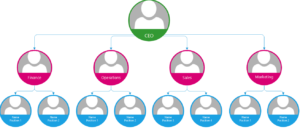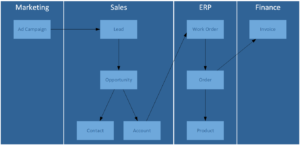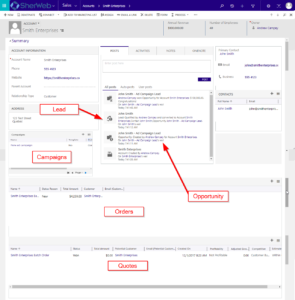The past two decades the business landscape has changed like never before. It has been fantastic for small business as they have been able to compete on a worldwide scale and the best of big business has been able to extend its reach around the globe.
The reason for this is due to the internet and computers which modify how companies do business. A sure indication of a struggling business is to say “this is how it has always been done.” It’s a clear sign a company hasn’t evolved to meet the needs of their market and customers. So how to do you stay ahead in the today’s market? The key is to understand the trends and where you are going. In today’s day and age, data is king.
Click here to download our free ebook on Dynamics 365 and get answers to your questions!
All established companies followed a similar pattern over the past 15 years:
- Paper and Excel spreadsheets captured client data that should be stored in a CRM system.
- Data needs to connect to external systems so complex integration can join systems together.
- It’s essential for companies to maintain their own data and organisations now use self-service portals.
It’s frustrating for staff to learn multiple user interfaces, to have conflicts in data, and to work with outdated integration solutions.
Hopefully, your organisation is progressive, so you’re up to the last item, congratulations! In this article, we will explain why breaking down the silos in your organisation can increase productivity, build strategy, and lead to happier employees.
Silos in business
Depending on the business type, you might hear the term silos at an excruciating level or not at all. In the past, companies put strict structures in place to handle day-to-day tasks to control business. You’ve likely seen an organisation chart similar to this:

It’s still the simplest way to explain the chain of command at an organisation. Most people can look at an organisation chart and get an idea of how the business works. Systems are designed to work like the groups shown above. In theory, it makes sense. Most organisations have their data siloed into a similar set of systems as shown here:
Today, a business and—most importantly—its data is flexible and agile. Staff perform tasks across business departments. Data flows not only up the organisation but across it too.
Silos in practice
Consider this simple example:
- Your company does a marketing campaign that is successful. It brings in many leads through various platforms (email, website, paper form).
- One lead becomes an opportunity and then an account (Hooray)!
- We generate a large work order in our ERP and fulfil the order. The ERP allows us to see the products in stock and we complete the order.
- We generate the invoice and await payment.
When we consider our example from a standard system design we see the following:

Our data is fragmented and split across multiple systems. There are difficulties understanding our customers. Silos represent a concept where data can be separated and where data flows in a single direction; however, we know neither of these to be true.
Considering our diagram above, we see a clear issue with having our data siloed. We are limited in our ability to track and identify trends and issues within our systems.
- Did a marketing campaign generate significant sales of a particular product or category?
- If an account calls our sales team and says “Another one of our branches would like an order similar to the last one”, how do they retrieve the information?
- Our sales team makes the sale and then gets a phone call from an irate customer. There has not been a delivery of their product. How do we know what happened?
Most integration will focus on maintaining contact and account information; however, we know today that there is much more to our customers than just phone numbers and email addresses.
Click here to sign up to our partner program and start reselling Dynamics 365 in less than 10 minutes
Breaking down the barriers
Using a system like Dynamics 365 combines all our business systems. Business entities and security roles allow us to address concerns about data privacy. We can make sure data is limited to different users, teams, offices, and locations. We can control data field-by-field where required. The diagram below shows Dynamics 365 in all its glory and the separation of the various components that make up the system.

Combining data into one system has many benefits, and when done well, there are few negatives.
Let’s consider our simple example again, and by combining our CRM and ERP into Dynamics 365, we can see all the details on one page.

We can see Campaigns related to this Account (or Lead), see the progression from Lead to Opportunity, to Account, and our Orders and Quotes.
You may look at the example above and realise you might not want everyone in your organisation having access to all this information and that’s understandable. In Dynamics 365 and any similar product, we can create forms that suit a business unit, security role, or an individual.
Users can hide data, but instead of hiding it in a different system, we just hide it from their view. The user experience can be the same for the entire organisation, yet data needs can be specific to each team.
Want more information on what a partnership with Sherweb looks like? Check out our InfoKit.
Summary
Combining your CRM and ERP should be a critical part of your companies’ future roadmap. As mentioned earlier, data is king and removing the silos and building a system that is a CRM and ERP allows for less training, satisfied staff, and gives insights you never expected about your data.
Think of all the information you could discover about your business just by having access in one spot:
- What is the average length of time from lead to payment?
- What impact does marketing have on return business and size of orders?
- What parts of our business can we streamline to improve our bottom line?
- What processes most influence customer satisfaction?
The questions become endless, and the insights you gain can be the difference between business growth vs reduction. By any definition, be it price, maintenance, usability, efficiency, or staff satisfaction, a combined CRM/ERP system makes sense. By integrating it, your company can improve business now and focus on anticipating trends for the future.
